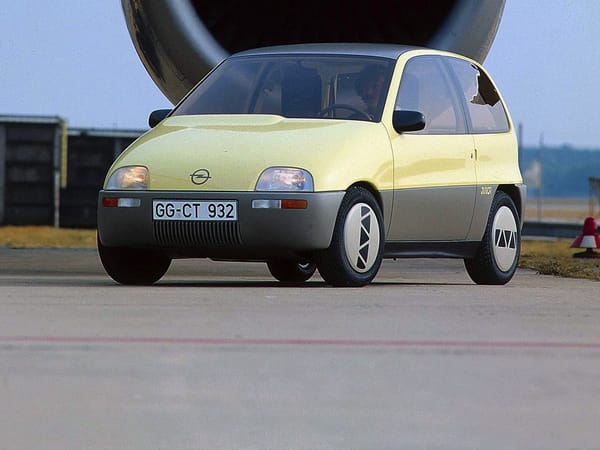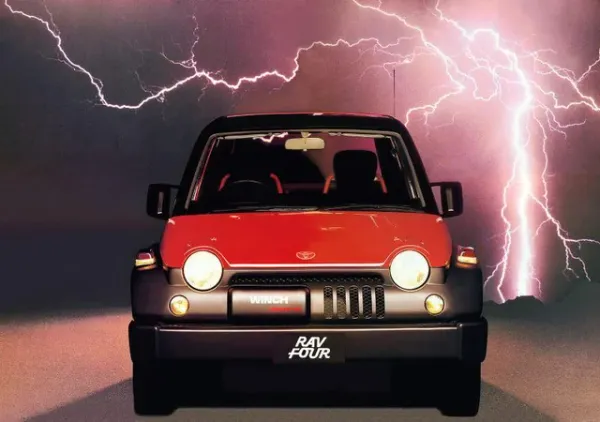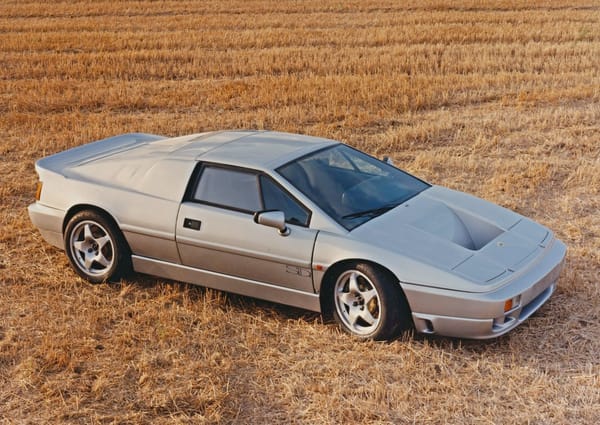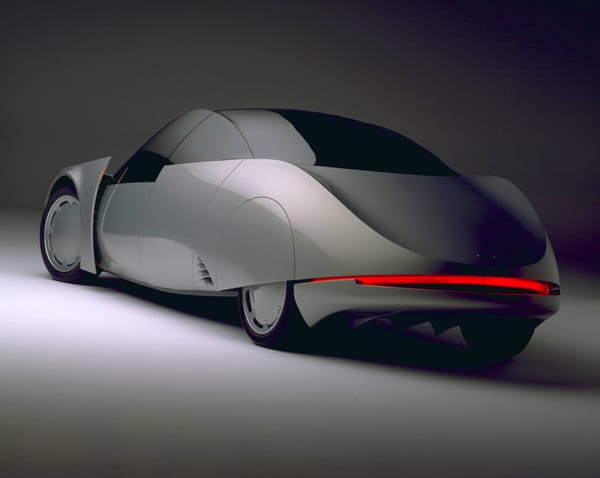AMC Amitron
Car of the Day #56: 1967 AMC Amitron
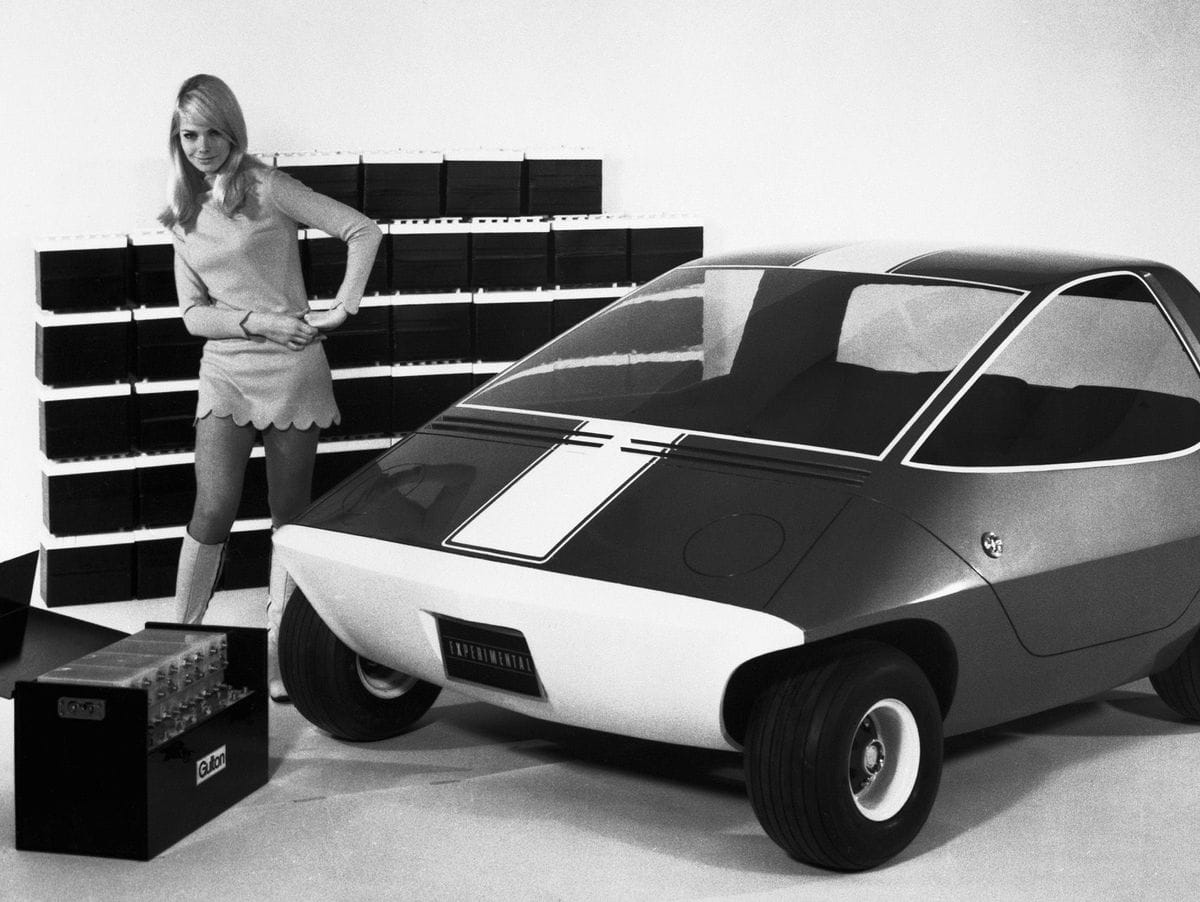
Automotive safety has been kind of a bummer, right? Think of how many incredible-looking vehicles we'd have now if it was acceptable to leave safety off the table. Doors could be thinner, seats could be lower, and bumpers would be a thing of the past.
Actually, we probably could do those things now…provided our cars were made from carbon fibre and we all wore HANS devices and five-point harnesses. Hell, why not? If you could drive an electric car that looked this good, seatbelts rated for the Indy 500 might be an acceptable trade-off.
It’s not often that designer Richard “Dick” Teague gets proper credit for his work. Most know the last names Shelby, Foose, Earl, Exner…but Teague? He pioneered interchangeable body panels for AMC so that brands could have different styling over top of the same mechanicals.
His time spent drafting airplanes at Northrop Corporation and building hot rods to run on California’s dry lake beds gave Teague the unique perspective of both a technical artist and a mechanic. Often, I find that when looking at AMC models I feel like the raw materials underneath the skin are somehow helping to shape its exterior form.
Teague started out at General Motors (he notably worked on the 1950 Oldsmobile Rocket) before he moved to Packard in its last days; he then landed briefly at Chrysler, and finally American Motors Corporation.
AMC was always the plucky underdog, and often styling was part of the process of saving money. Teague’s interchangeable body panels led to big money savings, and his ability to innovate — cab-forward interiors, subcompact cars, premium-look small cars, appearance decal packages — are all things we see today.
Oh, and the first Jeep Cherokee: if the SUV had been an album we’d be acknowledging his contributions to a certified platinum classic.
All of this is a long-winded way of saying: the AMC Amitron is a (cringe): car guy’s electric car. Just look at how all the official concept photos feature their own model. :\
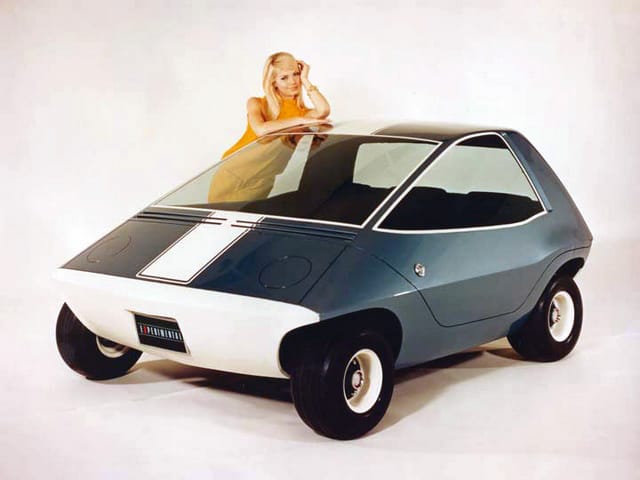
Small, wide, light, and with the wheels pushed to the corners, the Amitron has the proportions of a classic Mini Cooper…if it was made of American cheddar and squished into a wedge.
Amitron weighed just 500 kg (1,102 lbs) — 100 kg lighter than an Ariel Atom track car — but is an EV. Its battery weighed approximately 200 lb. in 1967, which checks 2024 electric car specs is approximately 2,000 lbs. today.
It was shorter than a modern smart fortwo and wide enough for three-wide seating, a trick that makes it quite practical. Its inflatable passenger seats were (presumably) inspired by the Quasar Unipower, and were designed to save space when not in use.
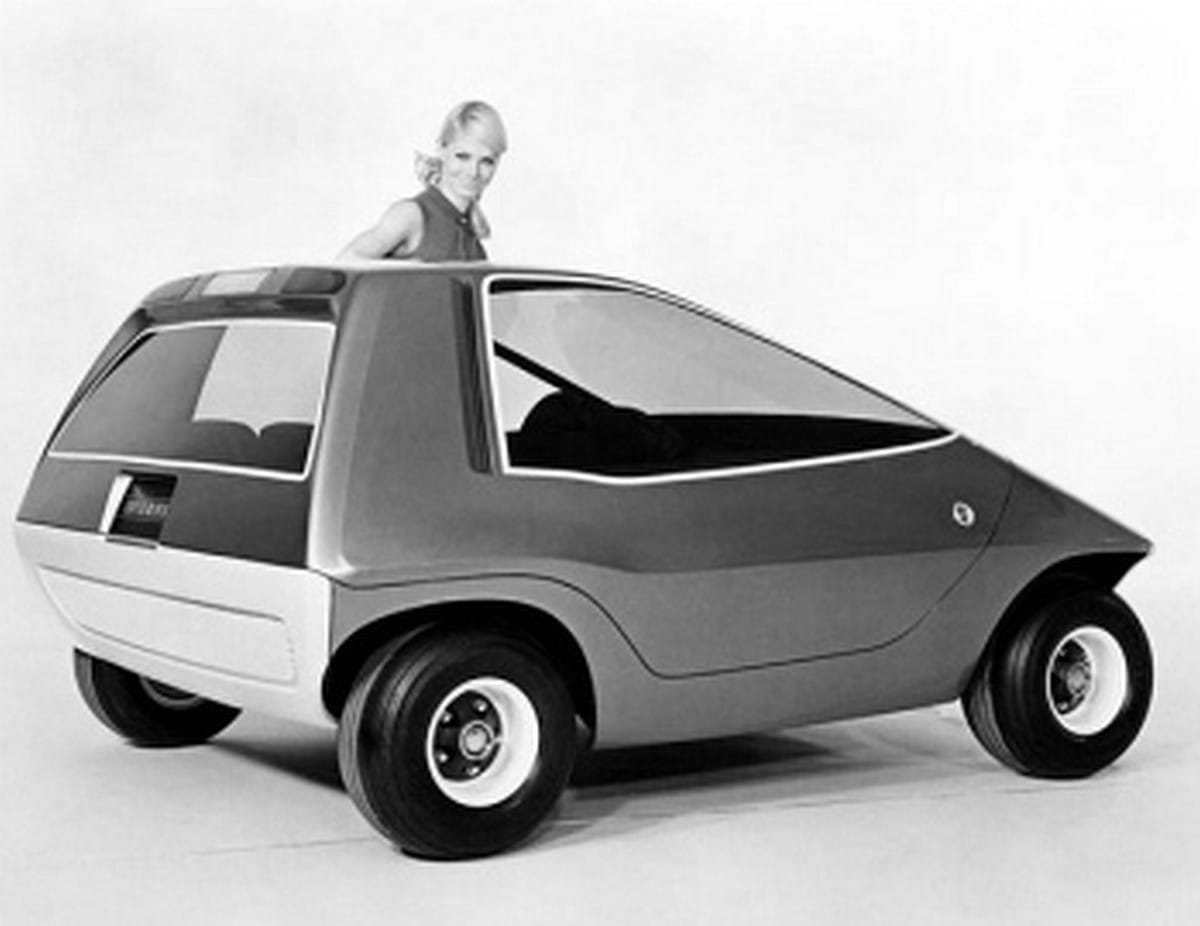
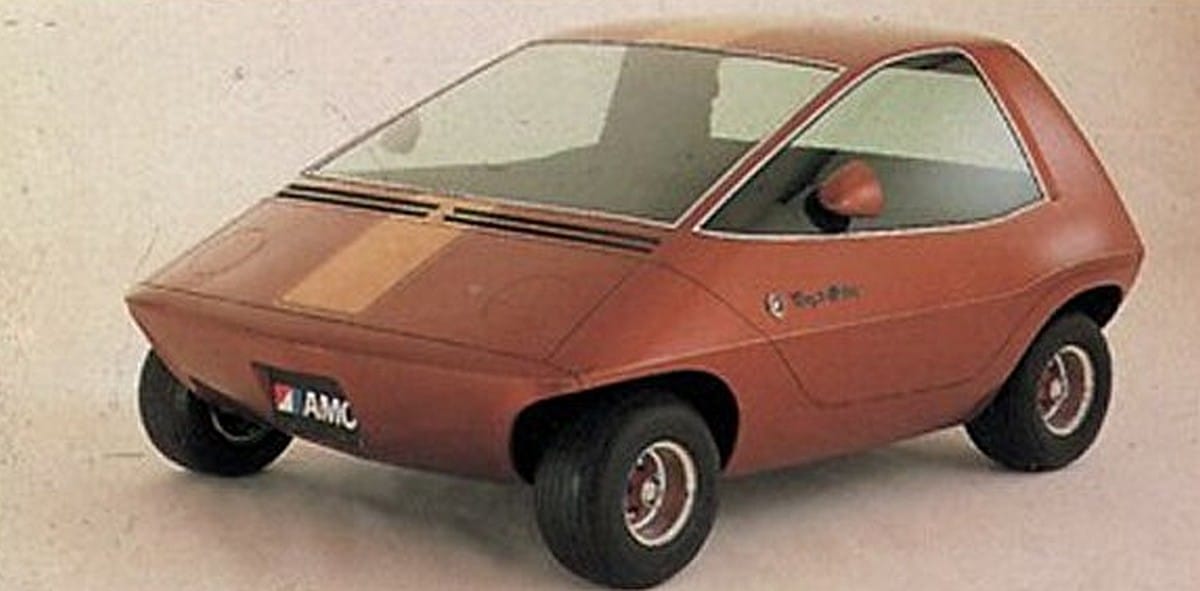
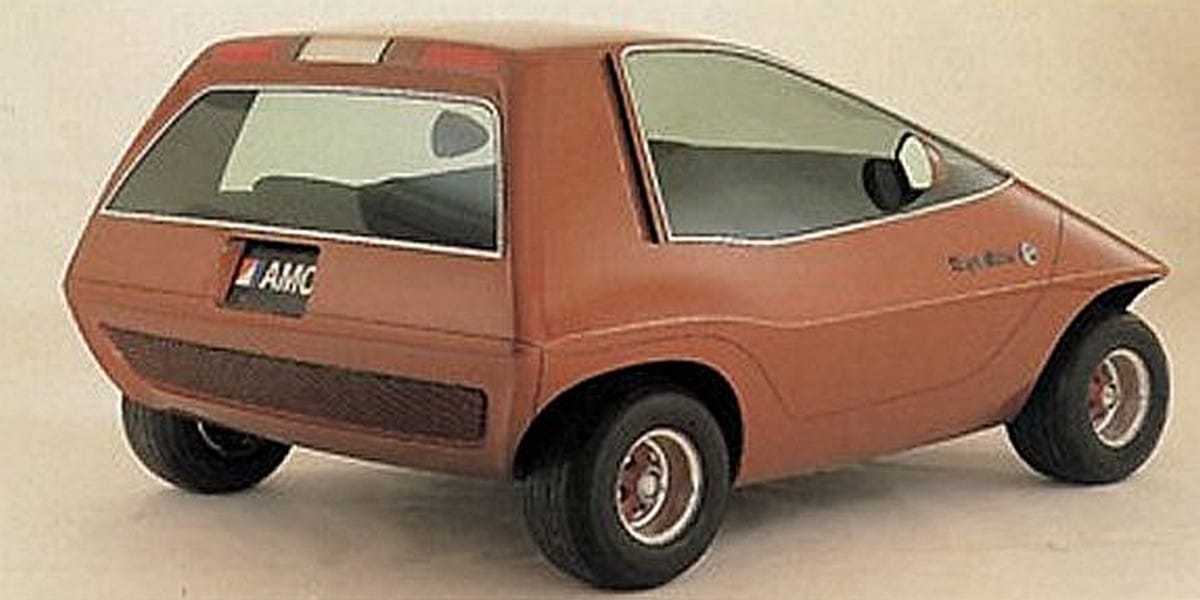
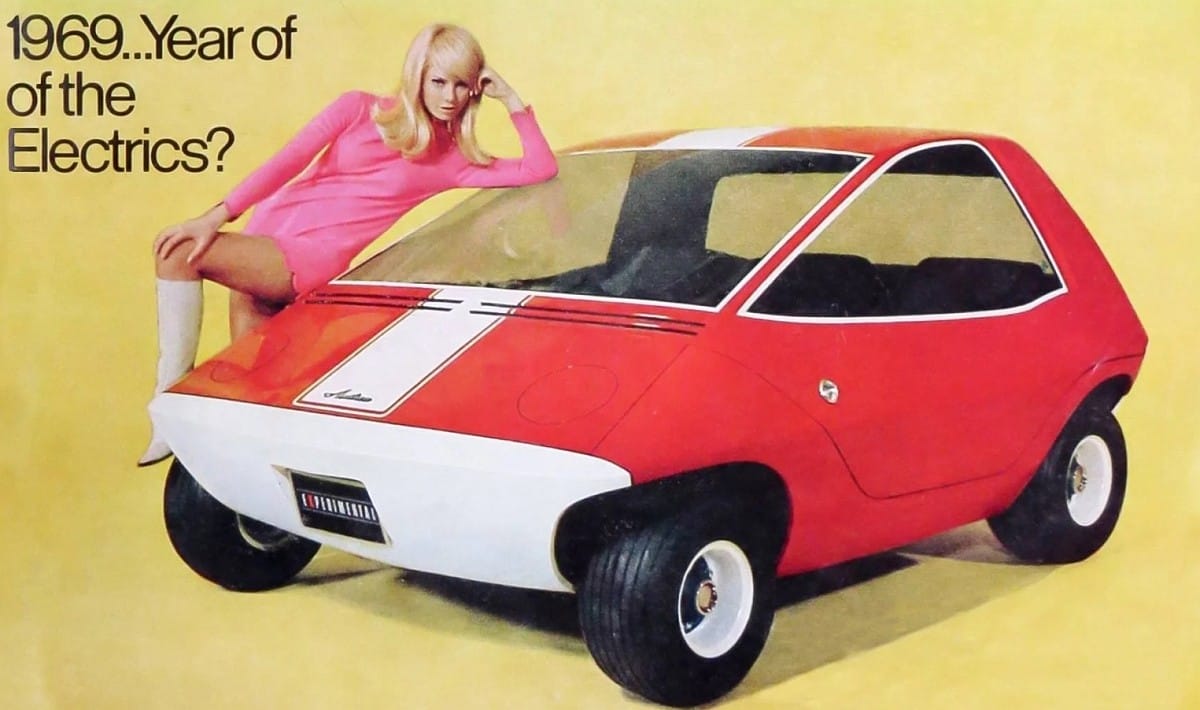
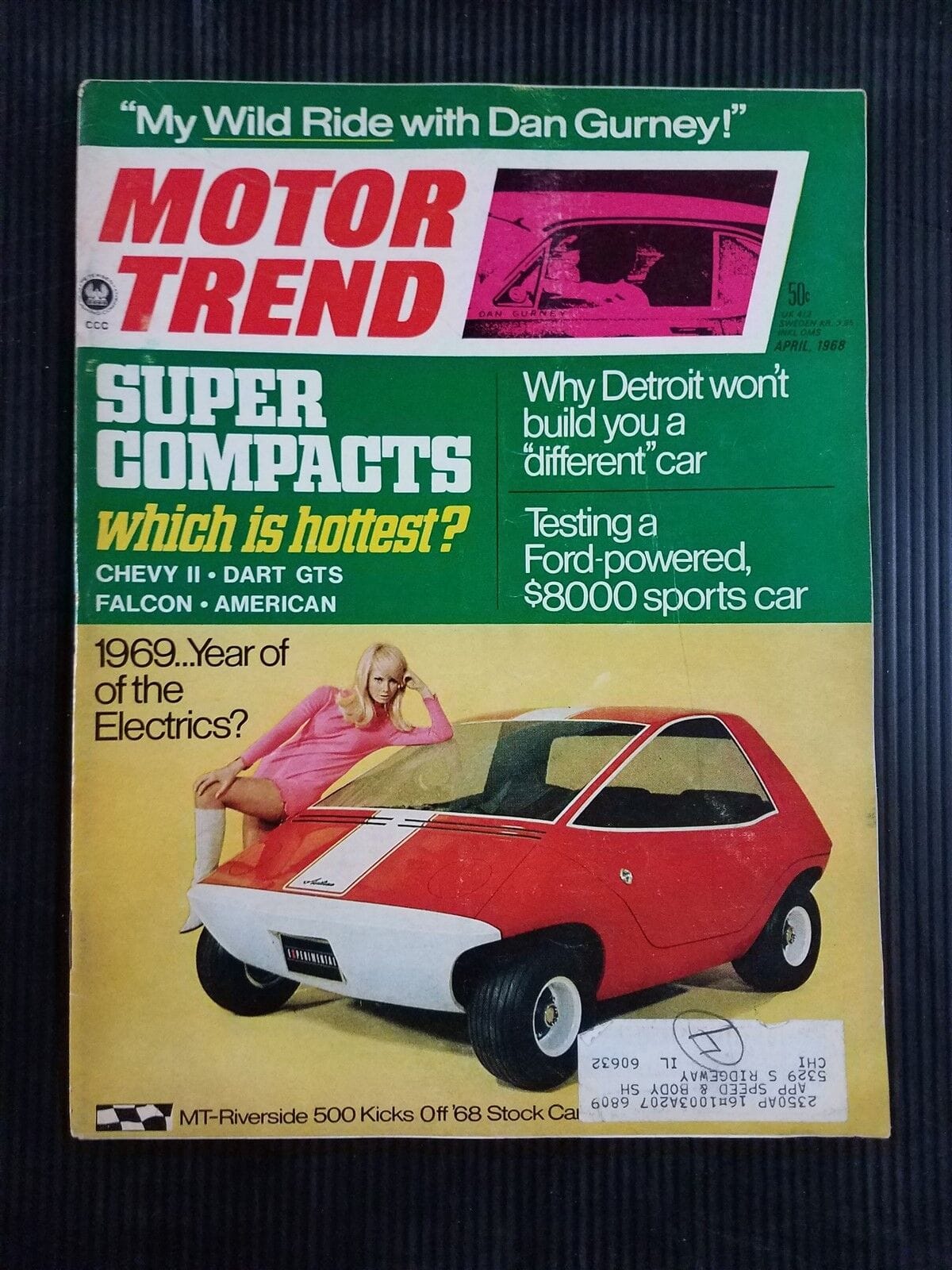
• via AMC, Motor Trend
The Amitron, shown in 1967, and the Electron, repainted red and shown again in 1977, showed off other innovative concepts, like two-stage battery storage and regenerative braking, both firsts. Its use of two nickel-cadmium batteries (for city motoring) and two lithium batteries (used as a boost for highway driving) gave the car great range, a quoted 241 km (150 miles) if driven at an average speed of 80 km/h (50 mph).
Of course, the twin AMC concepts never made production, but apparently the company was confident it had hit on the right formula. Other nascent, stillborn, and bankrupt car companies have said the same things, promising cutting edge performance for few trade-offs.
Some say if it was easy, everyone would do it; add to that: profitable.
I don’t begrudge AMC for not putting these EVs into production, but I like to think that in one universe out of 100 there are still Amitrons and Electrons vying for spots at AMC-branded, Dick Teague-designed charging stalls.
Amazingly enough, when I originally wrote this approximately a decade ago, the Amitron did not have a well-done Wikipedia page. Silver linings, yeah?
SUPPORTING MEMBERS
Thank you to my supporting members: Ben B., Brad B., Chris G., Daniel G., Damian S., Daniel P., Ingrid P., Karl D., Luis O., Michael J., Michael L., Michelle S., Mike B., Mike L., Mike M., Richard W., Sam L., Wiley H.


